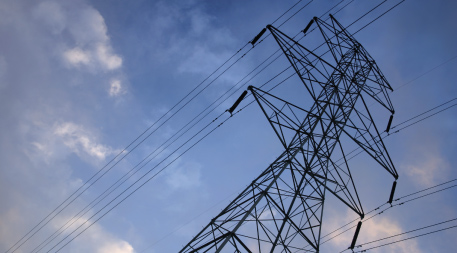May 1, 2013 — The sun has long been seen as one of the most promising power sources of the future. Plentiful, clean and free, solar energy tantalizes with the promise of solving the global energy crisis and alleviating climate change.
For a while, the world seemed to be on board with this vision. In 2008, venture capitalists backed hundreds of solar energy startups. The money flowed, and with it came ideas and innovations aimed at fast-tracking renewable energy on national and even global scales.
Then clouds — political, economic, social — began to cast shadows on the once-promising industry. Increased efforts to tap into the massive oil sands reserves beneath Alberta’s boreal forests lent the impression that North America was on the verge of energy independence, lessening the perceived need to develop renewable technologies. Then China entered the photovoltaic panel market, revolutionizing solar energy with amazingly low prices and forcing a number of companies that could not compete out of business. The cheap prices drove investors away and made it seem like solar no longer needed financial support, even though renewable energy in the U.S. was only in its infancy.
“It would be better to sell popcorn right now — there’s more money in that.” – Herb HaydenThe global recession dealt the final blow, turning focus toward cheap energy and quick solutions and distracting from long-term investments and thinking. As political and social interest in solar declined along with the economy, funding likewise dried up. Droves of once-promising startups and solar ventures, including those managed by major companies such as BP, Bosch and Sharp, declared bankruptcy. Others underwent major restructuring and hunkered down their efforts, just trying to survive. The solar energy bubble had burst.
“It would be better to sell popcorn right now — there’s more money in that,” says Herb Hayden, president and chief technical officer of Southwest Solar Technology LLC in Arizona, one of the companies that chose to restructure rather than give up. “I’m serious when I talk about how horrible it is. It’s just a thankless activity now.”
Political “Won’t”
In the new landscape of solar energy, several factors continue to confound recovery efforts. The lingering scars of the recession are no small obstacle. In the U.S., the average cost of electricity is 10 cents per kilowatt-hour, whereas solar costs around 30 to 50 cents for that same amount of power. Some European governments in similar circumstances get around this problem by aggressively subsidizing production of solar-powered electricity with taxpayer money. In the U.S., on the other hand, solar must compete with cheap, largely subsidized natural gas.
“That is why Germany, which has about one-fourth the population of the United States, has a total amount of solar power about six times higher than us,” says Martin Hoffert, a professor emeritus of physics at New York University.
While Germany’s government may see the need for aggressively pushing forward with a renewable energy agenda, U.S. politicians are not the best prepared for engineering and science decision making. Out of the 541 seats in the U.S. Congress, fewer than a dozen are held by scientists or engineers. Lacking technical expertise, U.S. politicians can struggle to discern the best source of information about renewable energy. Conventional energy suppliers try to convince them that newfangled solar technologies will not be a success, while scientists assure them that solar is the way to go. In between are the public, advisors and various interest groups, all pulling in different directions.
Though lack of political will may stand as solar’s biggest obstacle, the technology, too, has a ways to go if it’s going to be implemented on a much larger scale.“I think the biggest obstacle are politicians,” says David Faiman, a professor emeritus of engineering and physics at Ben-Gurion University of the Negev in Israel. “Specifically, I think they’re probably nervous about making very large changes and are also under considerable pressure from current power suppliers not to make those large changes.”
Will Work for Innovations
Though lack of political will may stand as solar’s biggest obstacle, the technology, too, has a ways to go if it’s going to be implemented on a much larger scale.
The labs and start-ups that have managed to survive are striving to get various solar-energy-capturing options up to par, particularly in scalability and pricing. In Arizona, for example, Hayden is building high-performance photovoltaic cells that require less capital and less risk investment than other companies, many of which have gone or are going out of business. Unlike other venues, Southwest Solar Technologies will build a key part of the system but also incorporate equipment made by other groups. This will lend Hayden’s product versatility and robustness, he thinks, that others who custom design their entire technologies lack. Still, even with these cost-saving strategies, in order for Hayden and others to survive they will need some resources.
“It’s not a slam dunk,” he says. “As we work on attacking the problems, we also have to come up with less risky ways of introducing the technology in order to be more attractive to potential partners.”
Storage is another issue. One of the biggest impediments to solar is its dependence on the sun’s unbroken glare. Ideally, solar energy could be captured while the sun brightly shines and then stored for later use after sunset or when clouds roll in, but current power storage capabilities are not up to task for storing the massive amounts of energy widespread deployment would bring. Researchers are working on storage technologies, but again, such efforts need funding to reach their goal.

The limitations of conventional electricity transmission are among the hurdles solar power must overcome. ©Mark Poprocki/Shutterstock.com
Transmission is another challenge. Most of the world’s power grid relies upon alternating current, but this form of electric power delivery is not well suited to traveling long distances. Using direct current — as some areas in Canada, China and Africa do — would enable solar energy collected in sunny Albuquerque to travel to overcast Seattle with minimal loss. When the energy reaches Seattle, local power companies would convert it back into AC before distributing it to homes. Some researchers imagine such transmission lines even crossing continents. “Back in the ’70s, there was this idea of the global grid,” Hoffert says. If power line efficiency were optimized, he says, “we could ship electricity all over the world, from a place where the sun is shining to the nighttime hemisphere.”
Finally, integrating solar energy into the grid will require a major restructuring of current power generators, slowly phasing out stations that rely upon burning fossil fuels and replacing them with others that handle energy from renewable sources like solar. “We need to restructure the power system completely in terms of the types of generators we’re building,” says Solomon Abebe Asfaw, a postdoctoral fellow at the Renewable and Appropriate Energy Laboratory at the University of California, Berkeley. Though this is one of solar’s major hurdles, he believes it can be done. “I personally think, yes, this is solvable, and that solar has the capability to supply the world’s energy demand,” he says.
Breaking the Logjam
In terms of physics, there’s no reason we can’t achieve the technologies that would make large-scale adoption of solar possible. Even seemingly sci-fi solutions, such as collecting solar energy from outer space — where the sun always shines — and beaming it down to Earth using high-powered lasers, could become a reality with enough investment and resources. Such ideas, however, “require a kind of vision and policy that I don’t see in current leaders,” Hoffert says. “Short of a massive social revolution like the protests of the ’60s, I don’t see this changing, and that’s depressing.”Just one cent per kilowatt-hour of electricity each family consumes would amount to enough money to build a gigawatt-scale power plant.
Faiman agrees that the break in the logjam will not likely arise from politicians themselves. But he is more optimistic about the public’s ability to implement significant changes. In Israel, for example, he says, citizens have discussed lending the government a one-time loan to create solar power plants. Just one cent per kilowatt-hour of electricity each family consumes — which is on the order of hundreds, not thousands, of dollars — would, Faiman says, amount to enough money to build a gigawatt-scale power plant. In a few years, the government could pay citizens back.
“Up until now, renewables have been treated as an investment, but there’s very limited [venture capital] available for investments,” Faiman says. “That automatically limits the size of the systems that can be built.”
On the other hand, he says, as a whole the public has an almost infinite amount of money that could be directed into such systems through modest loans. Israel is only a small country about the size of Maine, so, Faiman says, if this idea took off in Texas, Arizona or New Mexico, “it would be absolutely phenomenal.”
Sunny Future
Some governments are discussing aggressive solar plans, and several new domestic markets are emerging — not only in China, but also in India, Brazil, South Africa, Mexico and the Middle East. Paolo Frankl, head of the renewable energy division at the International Energy Agency, an autonomous intergovernmental organization, says he’s optimistic solar will become an increasingly significant source of global energy supply in the future. Rather than being in a logjam, he sees solar as undergoing a transitional phase that will eventually iron itself out. “Relatively speaking, solar is the fastest growing technology in the whole energy field,” Frankl says.
Faiman calculates that 90 percent of Israel’s electricity could come from solar in the next 30 to 40 years if the country took proactive steps, while Hayden thinks that about half the United States’ electricity could eventually come from the sun. Frankl’s organization estimated that, by 2050, solar could provide around 25 percent of the global electricity supply. Under extreme scenarios, according to Frankl, in the latter half of the century solar could account for fully one-third of the global energy demand. “That’s final total energy demand, not just electricity,” he says. “So that’s a huge amount.”
Solar energy’s gains would be fossil fuel’s losses, alleviating a major source of climate change–inducing greenhouse gas emissions and air pollution that impacts human health. Additionally, after the initial investment has been paid off, electricity produced through solar is almost free since only operation and maintenance costs are required. At such a cheap price tag, solar electricity could even be used for electrolysis of seawater to make hydrogen. Following this thinking, eventually we could make enough cheap liquid hydrogen to switch from gasoline to hydrogen for transportation, solving even more of the world’s energy problems.
“The world desperately needs solar power, even if the world doesn’t know it,” Faiman says. “And if the world really wants renewables, the technology is available.”
Ultimately, this is good news for solar energy. If the technological limitations are surmountable, solar truly can have a bright future once we muster the will to overcome our political and societal misgivings. ![]()
Ensia shares solutions-focused stories free of charge through our online magazine and partner media. That means audiences around the world have ready access to stories that can — and do — help them shape a better future. If you value our work, please show your support today.
Yes, I'll support Ensia!
